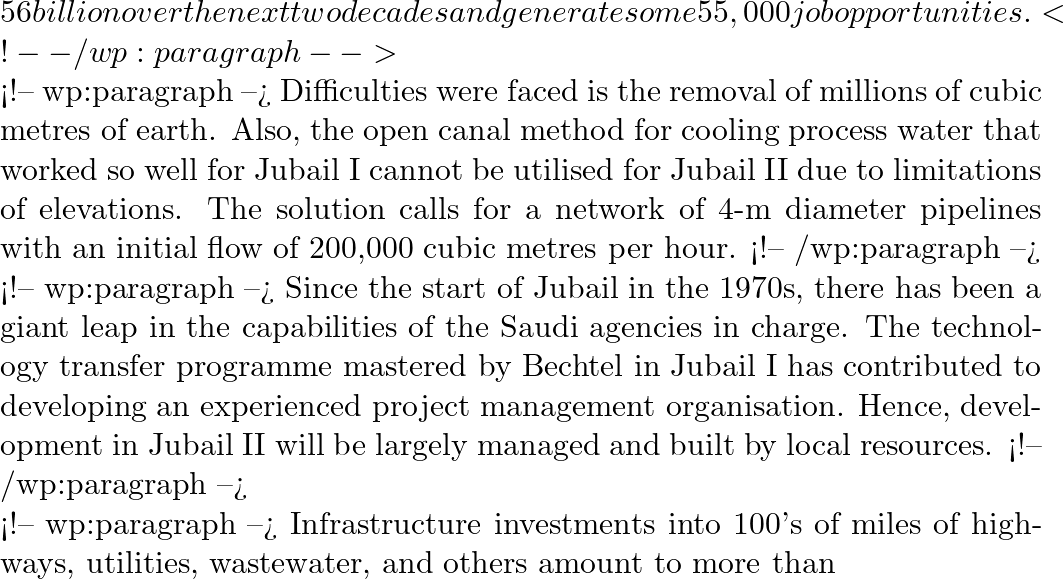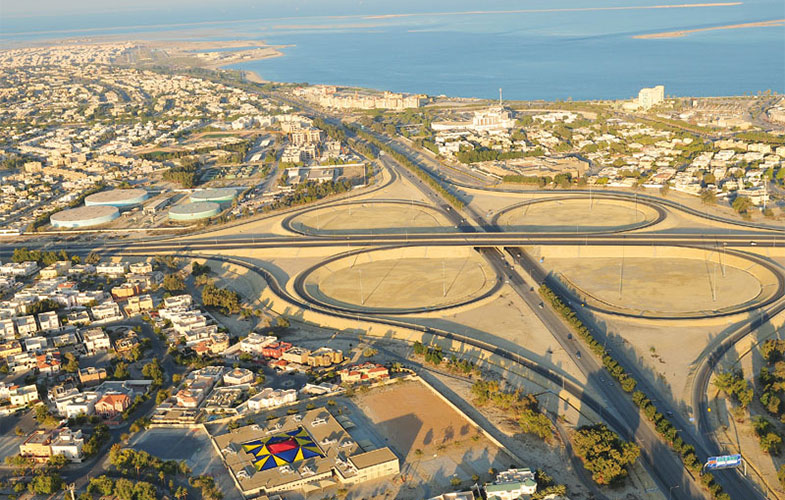In 2006 multi-billion-dollar work on Jubail II started as an industrial city aiming to create social benefits and strengthen the petrochemical industry, capitalising on the country’s abundant hydrocarbon resources. This project will double the size of the Jubail Industrial City by 6,200 hectares and will include.
· Residential accommodation for 120,000 residents,
· Education facilities, including an 18,000-student capacity university.
· Roads, bridges, medical centres, power, water, and waste facilities.
This expansion will result in Jubail II being the largest civil engineering project globally and make Jubail a significant player in the global energy market, attracting top technical and business minds from all over the globe.
Jubail II is expected to attract local and foreign investment worth  4 billion. with more than 20,000 workers during its peak season, the area becomes a gigantic industrial park. A further $14 billion dollars will be invested to build the industrial city.
4 billion. with more than 20,000 workers during its peak season, the area becomes a gigantic industrial park. A further $14 billion dollars will be invested to build the industrial city.
The development plan will be based on building the infrastructure in an open space set aside during Jubail I. Jubail II expansion is planned over 22 years, with plans for 100 industrial plants that include desalination plants, oil refineries, aluminium and smelting industry.
Two large ports are also to be built on an artificial harbour protected by 11 miles of the breakwater, including a 5.6-mile causeway, sea terminals, dry bulk terminals, a service quay and a module import facility.
Transportation links will include rail and roads. A 1065km railway line linking the city with Jeddah via Dammam and Riyadh. A 6-lane highway between Jubail and Dammam is considered the main commercial area within the project, creating a strong and efficient communication system for all project components. Hundreds of roads leading to smaller towns and areas within the project have been created. More than 530 miles and 60 bridges were built during the construction phase.
The residential areas are extensive, spacious and well-planned. Jubail II will provide residential accommodation for 120,000 residents, with education facilities, including an 18,000-student capacity university, The city’s total population was 684,531 in the year 2021.

Hassan graduated with a Master’s degree in Chemical Engineering from the University of Chester (UK). He currently works as a design engineering consultant for one of the largest engineering firms in the world along with being an associate member of the Institute of Chemical Engineers (IChemE).



